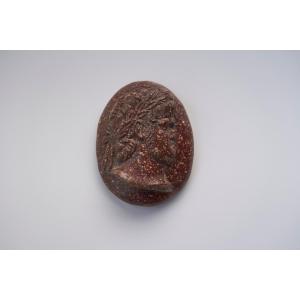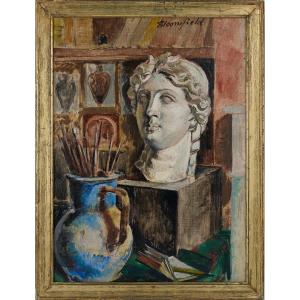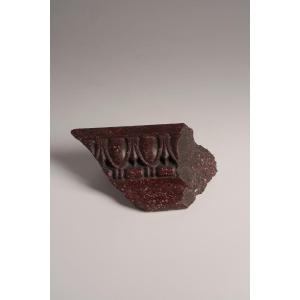This porphyry bas-relief depicts a male bust seen in right profile, traditionally identified as the Emperor Nero. The figure wears a laurel wreath and has wavy locks of hair and a short beard, typical elements of Roman imperial representations. The shallow relief is executed in a fragment of red porphyry from Egypt, a material historically associated with the Roman imperial sphere due to its hardness and symbolic color.
The object is not an original antique work, but a souvenir made at the end of the 19th century in the context of the Grand Tour. This type of production, intended for European travelers visiting Italy, took up the canons of ancient sculpture to offer reproductions intended for a cultured and wealthy clientele. The porphyry used here probably came from reused antique fragments, a common practice in Italian workshops specializing in collectibles.
The absence of inscriptions and the overall stylization of the face confirm the commemorative and decorative nature of this piece. The oval format and polished finish suggest that it is a cabinet or display object, intended to be included in a private collection of classical art. This bas-relief thus illustrates the 19th-century fascination with Antiquity, and the interest of European elites in symbols of Roman power, through hybrid objects combining ancient materials and modern production.




























 Le Magazine de PROANTIC
Le Magazine de PROANTIC TRÉSORS Magazine
TRÉSORS Magazine Rivista Artiquariato
Rivista Artiquariato